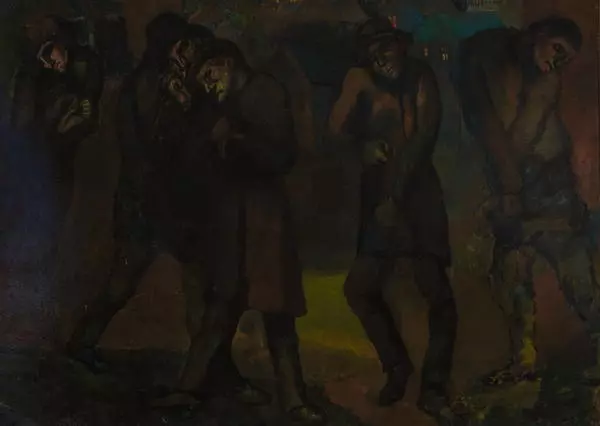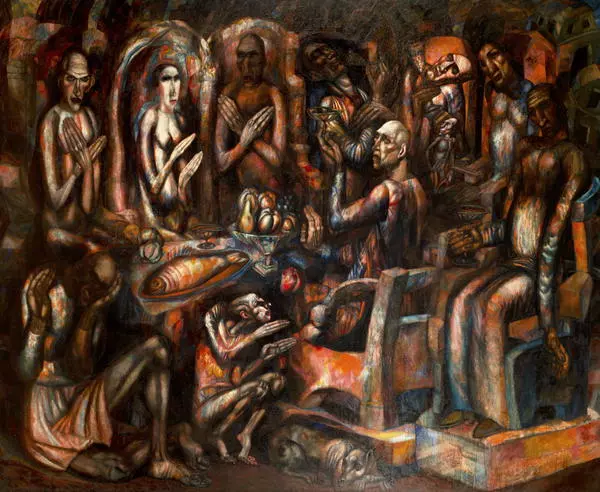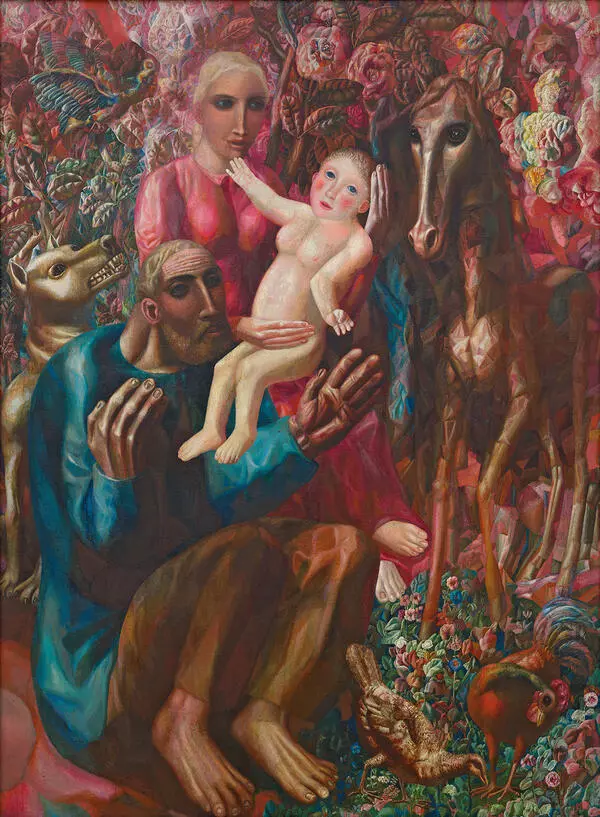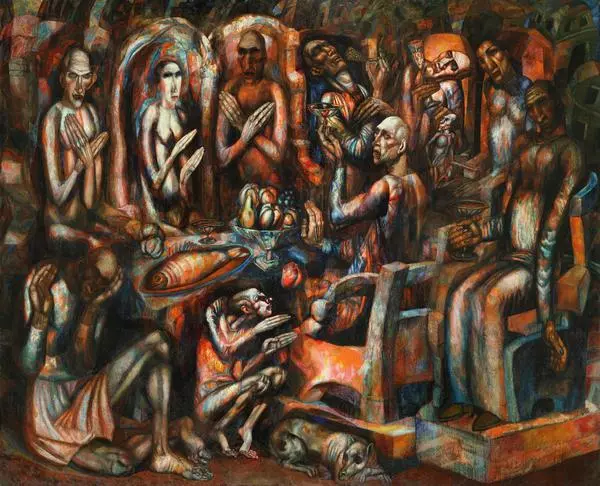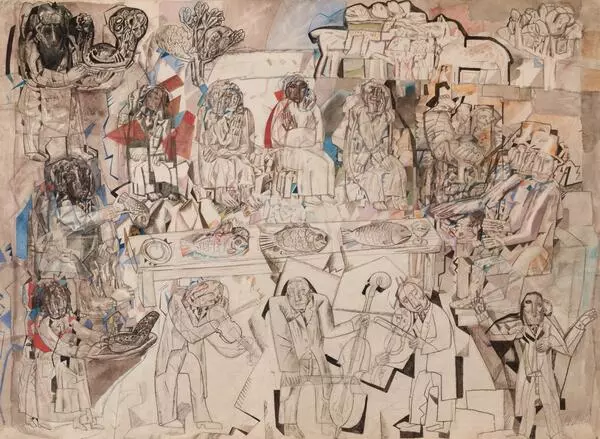In 1914, Pavel Filonov and several other Russian avant-guardists published Made Paintings, a manifesto of analytical art. According to Filonov’s method, everything in nature and in art develops from parts to the whole. With each stroke, an artist creates an atom of a new matter, so that everything depicted on his canvas is growing organically. This analytical method resulted in a complex composition in which all elements are closely related. Such a structure arose from overlapping colours and forms.
The Peasant Family
Время создания
1914
Размер
159x128 cm
Техника
Canvas, oil
Коллекция
18
Открыть в приложении#3
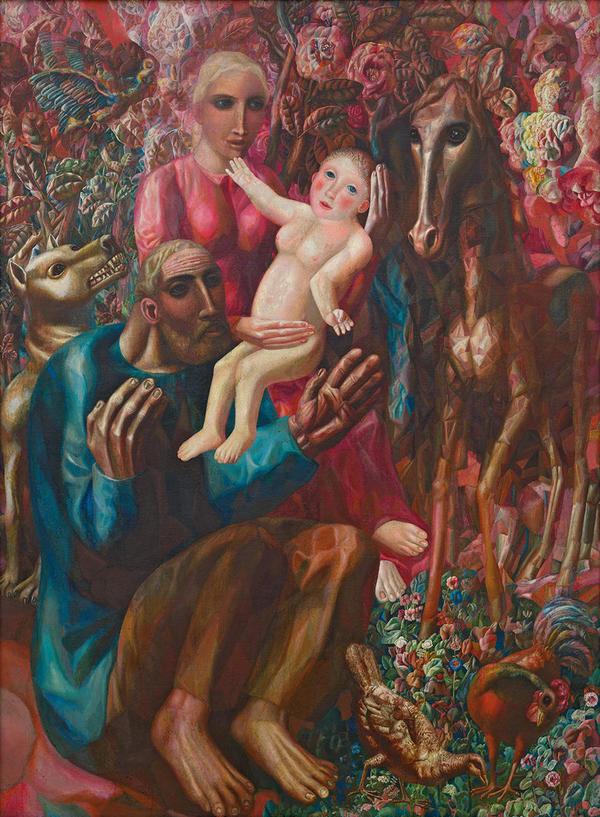
Pavel Filonov
The Peasant Family (The Holy Family)
#2
#4
One of the first made paintings by Filonov was his oeuvre The Peasant Family, or The Holy Family. In this painting, the artist embodied his understanding of the Nativity of Christ. He depicted the Virgin Mary, Joseph and the baby Jesus, surrounded by animals and flowers. Their figures originate with simple prototypes of popular prints: like many avant-guardists, the author was inspired by folk art.
At the same time, not only gaucherie is characteristic of these images, but loftiness as well. Filonov was a devout person: he went to Jerusalem, made a pilgrimage to Mount Athos. He admired the works of Russian icon painters. Therefore, the artist created The Peasant Family partially in the iconographic style. He captured figures in primitive poses, and depicted faces with thin noses and large eye sockets. The master portrayed many characters of that period with round, glazed as if horrified, eyes.
#6
Like all futurists, Filonov believed in the future prosperity of the world that would follow after the Apocalypse — when the old world dies. Nikolai Kuzmin, a Russian and Soviet graphic artist and Filonov’s contemporary, wrote: When the First World War broke out, many people claimed the role of soothsayers who foresaw in their works the coming bloody disasters. Filonov more than others deserved the title of a prophet. Even animals' faces reflect anticipation of apocalypse. The expressive dark eyes of the horse are as if they are full of tears.
#7
The Peasant Family belongs to a cycle of twenty-two paintings entitled Entering the World Prosperity. The entire series is dedicated to a brighter future when art will triumph in human lives.
#8
The principle of world prosperity was reflected in the motley world around the character of the canvas. The author chose colorful, rich, radiant tones. Especially pink, violet and lilac shades prevailed in the artist’s palette. Such colours were characteristic of the Venetian Renaissance school, which Filonov much appreciated.
#9
State Russian Museum
читать дальшескрыть
00:00
00:00
1x
The Peasant Family
Время создания
1914
Размер
159x128 cm
Техника
Canvas, oil
Коллекция
18
Открыть в приложении
Поделиться




